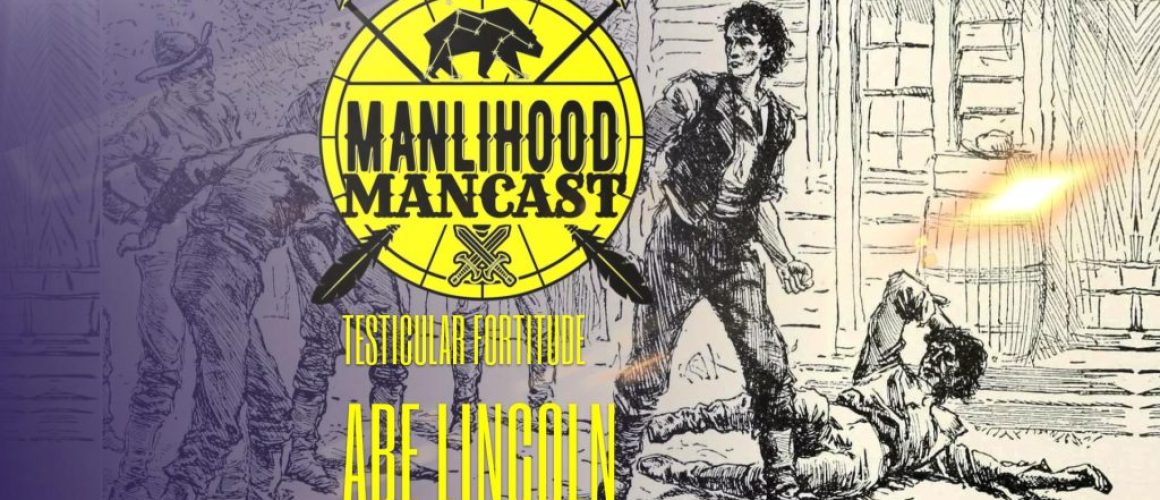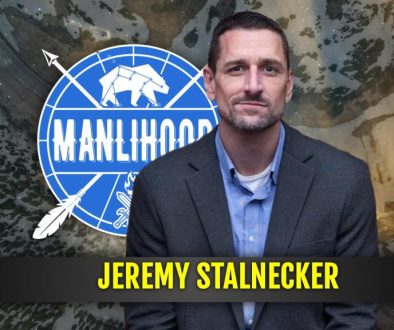Testicular Fortitude: Abe Lincoln
We’ve all heard tales of the youth of Abe Lincoln – the “Rail Splitter” – known for his strength and prowess with an axe.
His hard work on the frontier strengthened him not only for the mental challenges that would one day be required of him as President during the nation’s most trying time, but also a physical strength that was proven on many occasions as a frontier wrestler.
It’s hard to picture Abe as Hulk Hogan in “The Little Wrestling Ring on the Prairie,” but in many ways, he was just that. His exploits as a brawler built him a reputation that preceded him.
This episode is brought to you by HAINESKNIVES
ENTER TO WIN A HAINES KNIVES EDC AT Manlihood.com/contests
EVENT: Come See Sam Childers, The MACHINE GUN PREACHER DECEMBER 16 at 7PM at Open Arms Church in Bradford PA
We’ve all heard tales of the youth of Abe Lincoln – the “Rail Splitter” – known for his strength and prowess with an axe.
His hard work on the frontier strengthened him not only for the mental challenges that would one day be required of him as President during the nation’s most trying time, but also a physical strength that was proven on many occasions as a frontier wrestler.
It’s hard to picture Abe as Hulk Hogan in “The Little Wrestling Ring on the Prairie,” but in many ways, he was just that. His exploits as a brawler built him a reputation that preceded him.
William Herndon was a personal friend of Abe, and wrote a comprehensive biography of the 16th President. Some historians question the almost mythic tales – and whether they are true or legend, the spectre of Lincoln is known for an extraordinary strength. Here are some excerpts from Herndon’s writings.
“By the time he had reached his seventeenth year he had attained the physical proportions of a full-grown man. He was employed to assist James Taylor in the management of a ferry boat across the Ohio River near the mouth of Anderson’s Creek, but was not allowed a man’s wages for the work. He received thirty-seven cents a day for what he afterwards told me was the roughest work a young man could be made to do.”
“In June the entire party, including Offut, boarded a steamboat going up the river. At St. Louis they disembarked, Offut remaining behind while Lincoln, Hanks, and Johnson started across Illinois on foot. At Edwardsville they separated. Hanks going to Springfield, while Lincoln and his step-brother following the road to Coles Country, to which point old Thomas Lincoln had meanwhile removed”
“Here Abe did not tarry long, probably not over a month, but long enough to dispose most effectively of one Daniel Needman, a famous wrestler who had challenged the returned boatman to a test of strength. The contest took place at a locality known as “Wabash Point”. Abe threw his antagonist twice with comparative ease, and thereby demonstrated such marked strength and agility as to render him forever popular with the boys of the neighborhood.”
“He enjoyed the brief distinction his exhibitions of strength gave him more than the admiration of his friends for his literary or forensic efforts. Some of the feats attributed to him almost surpass belief. One witness declares he was equal to three men, having on a certain occasion carried a load of six hundred pounds. At another time he walked away with a pair of logs which three robust men were skeptical of their ability to carry. “He could strike with a maul a heavier blow – could sink an axe deeper into wood than any man I ever saw.” is the testimony of another witness.”
Herndon tells another story of Lincoln’s strength.
“…Jack Armstrong, a hardy, strong, and well-developed specimen of physical manhood, and under him they were in the habit of ‘cleaning out’ New Salem whenever his order went forth to do so. Offut and ‘Bill’ Clary – the latter skeptical of Lincoln’s strength and agility – ended a heated discussion in the store one day over the new clerk’s ability to meet the tactic of Clary’s Grove, by a bet of ten dollars that Jack Armstrong was, in the language of the day, ‘a better man than Lincoln’. The new clerk strongly opposed this sort of an introduction, but after much entreaty of Offut, at last consented to make his bow to the social lions of the town in this unusual way. He was now six feet four inches high, and weighed, as a friend and confident, William Green, tells with impressive precision, ‘two hundred and fourteen pounds’. The contest was to be a friendly one and fairly conducted. All New Salem adjourned to the scene of the wrestle. Money, whisky, knives, and all manner of property were staked on the result. It is unnecessary to go into the details of the encounter. Everyone knows how it ended: how at last the tall and angular rail-splitter, enraged at the suspicion of foul tactics, and profiting by his height and length of his arms, fairly lifted the great bully by the throat and shook him like a rag ….”
“Mr. Lincoln’s remarkable strength resulted not so much from muscular power as from the toughness of his sinews. He could not only lift from the ground enormous weight, but could throw a cannonball or a maul farther than anyone in New Salem.”
“No little of Lincoln’s influence with the men of New Salem can be attributed to his extraordinary feats of strength. By an arrangement of ropes and straps, harnessed about his hips, he was enabled one day at the mill to astonish a crowd of village celebrities by lifting a box of stones weighing near a thousand pounds.”
“There is no fiction either, as suggested by some of his biographers, in the story that he lifted a barrel of whisky from the ground and drank from the bung; but in performing this later almost incredible feat he did not stand erect and elevate the barrel, but squatted down and lifted it to his knees …”
Lincoln was of course not known as a brawler once serving in the oval office, but he did often show feats of strength to the US soldiers, in order to bond and show morale. Francis Fisher Browne was a Union soldier who authored “The Ever-Day Life of Abraham Lincoln. He tells the story of Lincoln walking over to an axe, picking it up by the butt, and holding it out straight in front of him at an arms length, parallel to the ground for an extended length of time.
Browne says, “Strong men who looked on, men accustomed to manual labor, could not hold the same ax in that position for a moment.”
According to William E. Glennap’s biography, Once, during a political speech, a fight broke out in the crowd. Abe left the podium, grabbed one of the assailants by the belt and the collar, and tossed him ten to twelve feet out of the crowd easily.
Every time I bring up Honest Abe, some constitutional scholar out there is quick to point out that he expanded the powers of the federal government to trump over states rights, which they say is unamerican and dishonorable.
My response is that the reason for that move, was to end human slavery, and to preserve the Union. Slavery is abominable. While the rights of individuals, and the rights of individual states is important – we should all agree that no human being should be allowed to own another. Freedom for some is not freedom for all. Justice for some is not justice for all. If the rules of the land allow for slavery to exist, than the rules must be changed. So I stand behind Abe on this one.
Abe wrestled with the decision to emancipate. He knew the law, and knew the rules. It was a dangerous position to take – as a president, to challenge the constitutional authority of the states. It was a wrestling match he had to win, even though it would seem there was no winner.
He grew up tough. That toughness served him well. He was tough enough to lead. Tough enough to break the rules when they were not just.




